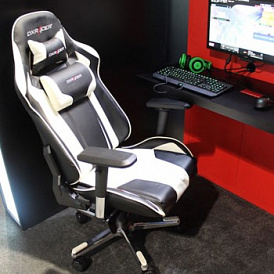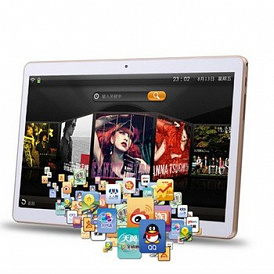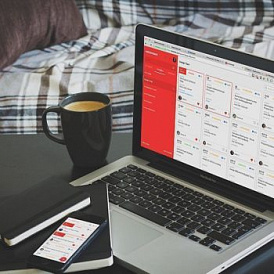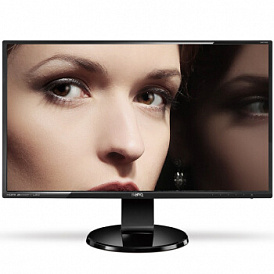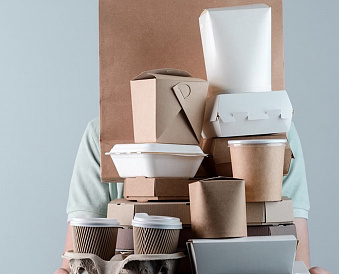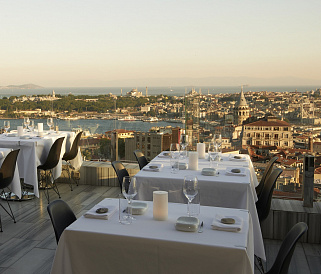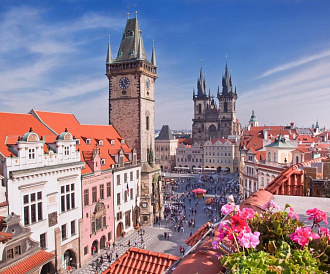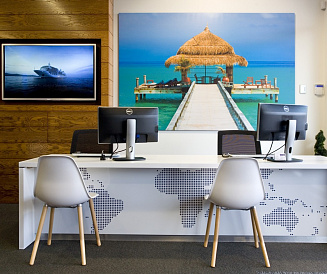Top 10 LED Printers
Each user understands the difference between an inkjet printer and a laser printer. But not everyone is aware that there is another printing technology - LED. It has a lot in common with laser, so it even reaches confusion when choosing a model for purchase. But there are also important differences, mostly technological ones. Presented to your attention a rating review from expert.bigbadmole.com/en/en/ is devoted to just such devices, their features and nuances of work.
Which is better - LED or laser printer?
To begin with, let's see what is the principle of LED printing and how is it better or worse than laser printing. Just say, LED printers occupy a sizeable market segment, which means that they have a place for office and home use.
So, fundamental difference in the way of printing between two types of printers is that the laser printer uses a single laser diode, and the LED printer has a whole line of microscopic light-emitting diodes (their number varies on average from 2.5 to 10 thousand depending on the printer resolution). We will not delve into the technical details of the principle of "magnetization" of the surface beam and other components of the process, but only describe what the other technologies give in practice.
- The first, most noticeable and probably main advantage of LED printers - compactness. Other things being equal, color laser and LED printers may differ by several times. In monochrome printers, the difference in size is not so dramatic, but still very noticeable. In the end, the facts speak for themselves - OKI monochrome LED page printers are still the most compact in the world.
- In terms of speed, that is, printing, here already laser printers give the LED a tangible head start. So, on average, the speed of LED printing is tens of pages per minute, whereas many models of laser printers show a speed of one hundred and more copies per minute.
- Regarding the quality of printsthen at the “everyday” level both technologies show approximately the same results. But if suddenly there is a task to get a print with a flawless form of “grain”, only an LED printer will cope with this. The fact is that in LED printers, each LED gives a light spot of identical shape. While in the laser, additional lenses are needed, which correct the distortion of the geometry of the light spot at the edges of the photodrum.
- In LED printers, there are practically no moving parts, except for the mechanics of feeding and running paper. Precision mirrors and a rotating multifaceted prism are built into the laser. Traditionally, the smaller the mechanics, the more durable the device. Nominally, this is true, but in the context of the current market situation with its annually updated assortment that a laser printer and an LED printer are more likely to become obsolete and gather dust in the corner than to fail due to wear.
- Now a few words about the phenomenon, which far from everyone thinks about - environmental friendliness. And in this case we are talking not only and not so much about environmental protection, but about the safety of the printer for the health of the surrounding. In the laser printers of the past generations there was a coronator - a thin wire through which current was passed under high voltage.A side effect of the coronator was a fairly strong ionization of air. Recall that in small quantities ozone is good for health, and in large quantities it is actually poison. In modern models, the coronator is no longer there - it was abandoned, not least because of the safety of the copy machine operator’s health. But one more natural ionizer remains - the laser beam itself, and nothing can be done about it. In LED printers, the problem of ozone formation is absent in principle, and this is important when it comes to intensive loading indoors.
- And the last point, which is worth mentioning, even though this problem can worry only a very small percentage of potential users. In laser printers, a diode emits electromagnetic radiation not only in the desired “working” range, but also affects the radio frequency range. Accordingly, using a modern radio scanner, it is possible to intercept data and decipher the printed image. Thousands of LED diode printers do not flash consistently, but at the same time in the right places. Accordingly, the radio scanner will “hear” only noise, which cannot be deciphered.
All of the above, we present in the form of a generalized table of advantages and disadvantages of both technologies.
|
Characteristic |
Laser |
LED light |
|
Dimensions |
- |
+ |
|
Print speed |
+ |
- |
|
Quality |
- |
+ |
|
Wear |
- |
+ |
|
Ozone release |
- |
+ |
|
Information Security |
- |
+ |
- assessments are generalized, and in the context of certain tasks may change their value. The explanations are given above.
The conclusion can be drawn as follows. For domestic purposes or tasks of an ordinary office, both technologies approximately maintain parity. The noticeable difference is only in the dimensions of the devices, and even then not always. The pros and cons of laser or LED printing technology are acquired only when there are super-challenges with increased requirements.
Ranking of the best LED printers
| Nomination | a place | Name of product | price |
| The best LED printers for home and small offices | 1 | Brother HL-3170CDW | 19 490 ₽ |
| 2 | OKI C542dn | 30 492 ₽ | |
| 3 | Xerox Phaser 6020 | 13 100 ₽ | |
| The best LED printers for medium offices | 1 | Xerox Phaser 6510DN | 22 990 ₽ |
| 2 | OKI C823n | 57 960 ₽ | |
| 3 | Ricoh SP 400DN | 11 294 ₽ | |
| 4 | Ricoh SP C352DN | 31 522 ₽ | |
| The best LED printers for a large office | 1 | Xerox Phaser 7800DN | 245 000 ₽ |
| 2 | OKI C843dn | 89 720 ₽ | |
| 3 | Xerox VersaLink C7000DN | 77 190 ₽ |
The best LED printers for home and small offices
So, we go directly to the rating, and we will start with three models that can serve as home helpers or carry out the tasks of a small office. Our experts have identified from the wide market offer three models of different brands - the Japanese Brother and OKI, and the American Xerox. All three trademarks are well known and do not need special descriptions.
The models described below have the following general characteristics:
- type of placement - table;
- format restriction - A4;
- ability to print in full color;
- built-in AirPrint function;
- 4 cartridges for each base color;
- The optional ability to print on different media (envelopes, label films, etc.) - needs to be clarified at the point of sale.
Brother HL-3170CDW
Rating: 4.9
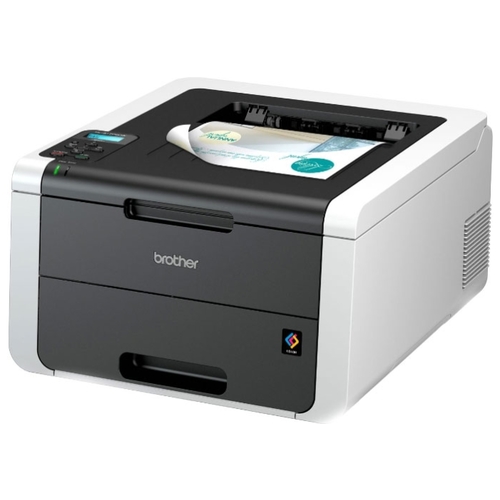
To begin with, we will consider a LED printer manufactured by Brother Industries, a Japanese corporation, which has proven itself very well among private users and as part of small office equipment.
The dimensions of the unit are 410 × 240 × 465mm, weight - 21.5 kg. In the process of printing the printer consumes 380 watts of electricity. In standby mode - about 60 watts.
Image detailing for full-color images is 2400 × 600dpi (maximum), for single-color images - 600 × 600dpi. Resource of any color cartridge by toner volume is about 1.4 thousand copies, black - 2.5 thousand copies. Production capacity - for 30 days about 30 thousand prints.
LED printer prints in color and b / w with an intensity of 22 copies / min. 2-way mode is activated automatically. The tray capacity parameters are as follows: automatic feeding - 251 sheets, dispensing - 100 sheets, manual feeding - 1 sheet. Suitable paper grammar is 60-163 g / sq. m
The electronic communication part of the printer has the following parameters. Integrated 128 MB RAM. You can connect to the device by wired method - over a local network or via USB 2.0; or wireless - via Wi-Fi. PostScript support is provided.
Virtues
- a combination of cost, performance and quality;
- acceptable print quality with cost;
- Wi-Fi connection;
- ease of installation and operation;
disadvantages
- hesitantly picks up paper from the hand tray.
OKI C542dn
Rating: 4.8
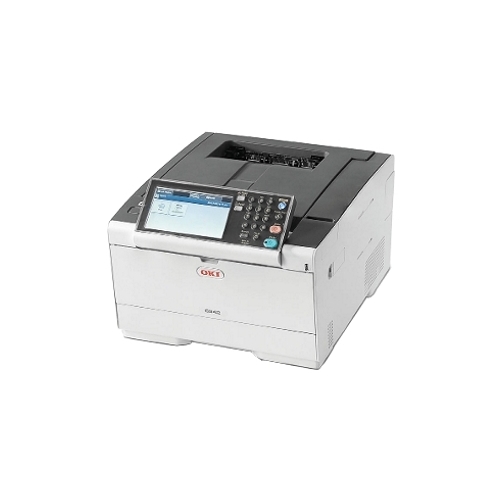
Further, the ranking from expert.bigbadmole.com/en/en/ is followed by a very remarkable and bright production model from OKI, which in 1987 released the world's first LED printer to the market.
The LED printer is slightly larger than the model described above, but slightly - 427x279x571 mm. It weighs 24 kg. Power consumption when printing - up to 1.25 kW, pending - up to 90 watts. Print noise is estimated at 54 dB, pending - 37 dB. The control panel is equipped with a large color LCD display with a 7-inch diagonal.
Detailing the resulting image - up to 1200x1200dpi for any chromaticity. The nominal life of any of the cartridges - 1500 copies. The declared average productivity is two times more than that of the above described model from Brother - 60 copies for 30 days. A suitable paper density is 64-220 g / sq. m
The print speed of this model is one third higher than that of the above-described Brother - 30 ppm in both modes. 2-sided printing is automatically enabled. It takes 35 seconds for the printer to fully warm up. The first print is issued after 7.50 c in both modes.
The trays capacity parameters are as follows: automatic feeding - 1410 sheets, dispensing - 250 sheets, manual - 100 sheets.
The features of the electronic software part are as follows. RAM-memory is installed immediately the maximum possible for this model volume - 1 GB. You can only connect via wire - via USB 2.0 or LAN. PostScript support is provided.
Virtues
- large display;
- web interface;
- performance;
- print quality;
disadvantages
- no wireless connection.
Xerox Phaser 6020
Rating: 4.7
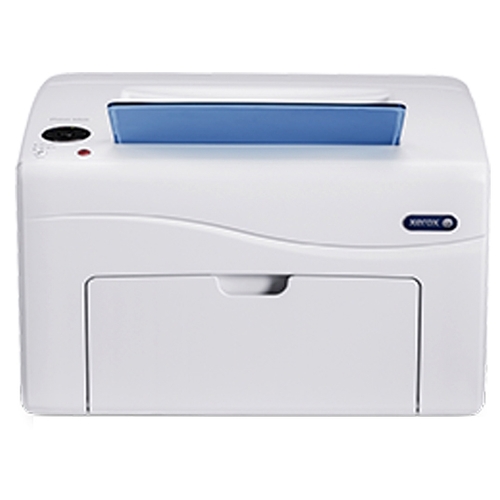
And the final position in the rating of "subcompact" LED printers is the brand model, which in the CIS countries has become a household name - Xerox. Despite the brand name, the cost of the printer is the most affordable in the group.
This model is smaller than the previous two - 394x234x304 mm and weighs 10.9 kg. The level of electricity consumption when printing - 220 W, in stand-by - 45 W.
Detailing the image for any color is 1200x2400 dpi. The nominal volume of toner in a black cartridge is designed for 2 thousand copies, in color - 1 thousand copies.
In terms of print speed, this model noticeably loses the preceding one: in b / w speed - 12 ppm, in color - 10 pages. The first print comes out after 19 seconds. Nominal capacity - 30 thousand copies in 30 days. Grammar paper - from 60 to 220 g / sq. meter. The recommended loading tray is 150 sheets. The delivery tray is designed for 100 sheets.
Printer electronics are controlled by a processor with a frequency of 525 MHz. RAM memory - 128 MB. Connection is made via wire via USB or “over the air” via Wi-Fi. PostScript support in this model is not provided.
Virtues
- print quality;
- the most affordable price in the group;
- design;
disadvantages
- no support for PostScript.
The best LED printers for medium offices
Now consider a group of models, the performance and resource of which is sufficient to meet the working needs of a medium-sized office. Our experts put four noteworthy models in the rating - two made by the Japanese company Ricoh Company Ltd, one from the manufacturer of the world's first LED printer OKI and one from the American Xerox Corporation.
The format restriction is A4, excluding OKI C823n, where the limiting format is A3. Also, all LED printers in the group, except OKI, automatically switch to bidirectional mode when the corresponding command from the PC is received.
Xerox Phaser 6510DN
Rating: 4.9
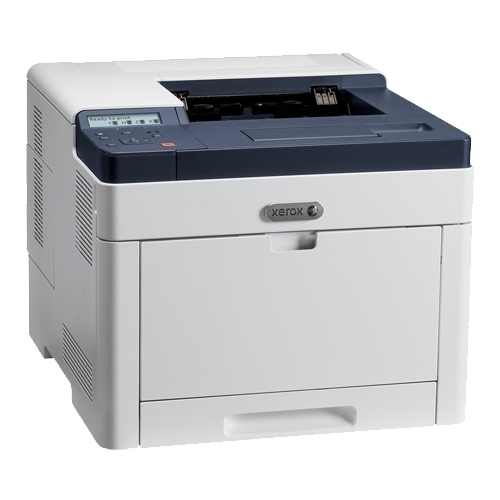
Let's start with a fairly bright "American" - Xerox Phaser 6510DN. The LED printer is designed for A4 format with a maximum image size of 216 × 356 mm.The dimensions of the unit itself are 420x347x483 mm, weight - 23.8 kg. The level of electricity consumption when printing - up to 350 W, while waiting - 44 W. The average noise level during printing is 51.9 dB, while waiting is 24.9 dB.
Maximum image detail - 1200x2400dpi for any color. Print speed is good enough for a LED technology: 28 pages per minute for any color. The first print is issued after 12 seconds in any color. Estimated capacity is 50 thousand prints in 30 days.
Tray characteristics: automatic feeding - 850 sheets (optimally - 300), output - 150, manual feed - 50. The range of suitable paper grammar is 60-220 g / sq. meter. The nominal toner load of the color cartridge corresponds to the conditional 1000 p., Black - 2500 p.
The center of electronics is a processor operating at 733 MHz. The maximum available RAM for this model is 1 GB. Connection is made via USB or twisted pair. The firmware includes support for PostScript. There is own web-interface.
Virtues
- image detail;
- fast and uninterrupted transition to the standby mode and back;
- reliability and durability;
- color rendition;
disadvantages
- no wireless connection.
OKI C823n
Rating: 4.8
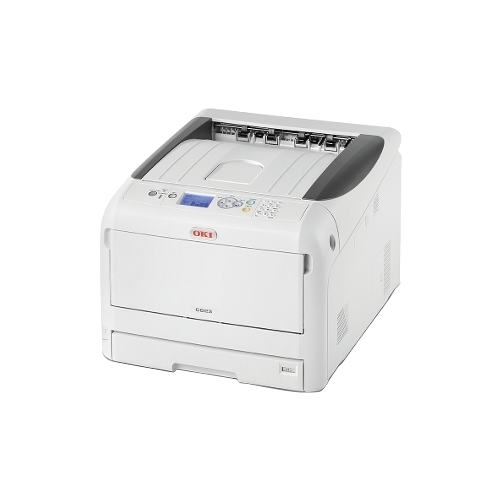
Further, in the current selection of rankings, we consider an extended format LED printer from OKI, a company that once introduced the world's first LED printer to the market. This is the most expensive model in this group, but considering the print format, the price looks quite acceptable.
The model is designed for printing on A3 standard media, and this is its main advantage. In the case of a laser printer, this would also determine impressive dimensions. In this case, due to LED technology, the device dimensions are only slightly larger than the above-described A4 format model - 449x360x552 mm. Weight - on the contrary, significantly more - 37 kg. The level of electricity consumption when printing - 1.4 kW, while waiting - 100 watts. Nominal noise when printing - up to 52 dB, pending - up to 32 dB.
Image detailing - up to 600x1200dpi for any chromaticity. Another noteworthy point is the impressive toner cartridge life by toner, which corresponds to the conditional 7 thousand pages for all four cartridges. The recommended paper density is 64-256 g / sq. meter.
The print speed parameters are the following: for A4 format of any color - 23 ppm for A3 of any color - 13 ppm. It takes 25 seconds to warm up. The first copy is served after 14 seconds on any color. Estimated performance - up to 75 thousand copies in 30 days.
The trays have the following characteristics: automatic feeding - 935 sheets maximum (400 recommended), issue - 350 sheets, manual feed - 100 sheets.
The upper limit of the RAM-memory resource is 768 MB, 256 MB is standard. Connection via USB or twisted pair. Printing is carried out both directly and through the printer’s own web-interface. The firmware does not contain PostScript support.
Virtues
- A3 format;
- cartridge life by volume of toner;
- usability;
- design;
- Memory;
disadvantages
- PostScript is not supported;
- no wireless connection.
Ricoh SP 400DN
Rating: 4.7
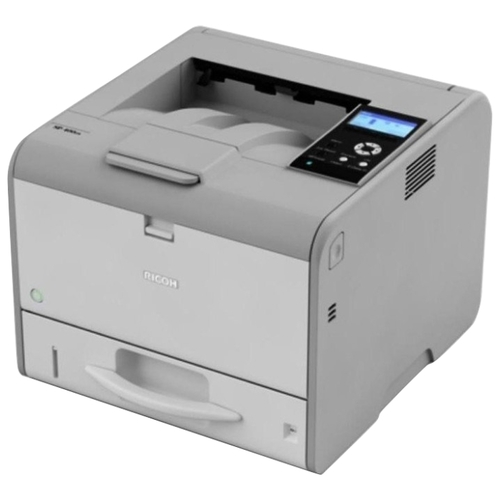
Now, in the framework of the rating, we consider a printer that is fundamentally different from all the above. The difference is that it is designed only for black and white printing. Of course, we do not consider this circumstance as a disadvantage, but only as a feature, especially since the cost of this model is quite fair. In a significant proportion of the cases, the possibility of color printing for office needs is simply redundant, and it is pointless to overpay for it.
Printer dimensions - 370x306x268 mm, weight - 14.5 kg. The level of electricity consumption during printing is 990 W, while in anticipation the consumption is almost zero - 1 W. Designed for a peak load of 50 thousand copies in 30 days. Format - A4.
The limit of image detail in this model is 1200x1200dpi. Print speed is 30 ppm. Warming up time - 19 seconds. The first print comes out after 6.5 seconds. Duplex mode is activated on the fly. The recommended paper density is 52-162 g / sq. meter. The capacity of a full-fledged toner cartridge corresponds to the conditional 2.5 thousand pages.The capacity of the trays is as follows: automatic feeding - maximum 850 sheets, recommended - up to 350 sheets; issuance - 125 sheets.
The printer’s electronics are controlled by a fairly powerful ARM Cortex A8 processor running at 500 MHz. The factory installed RAM is 256 MB, corresponding to the maximum possible for this modification. Wired only connection - USB or "twisted pair". The firmware includes support for PostScript.
The warranty period of the manufacturer for this model is 12 months.
Virtues
- powerful electronics;
- the most affordable price in the group;
- design;
- extremely carefully picks up paper and other media from trays;
- reliability;
disadvantages
- principal disadvantages not identified.
Ricoh SP C352DN
Rating: 4.7
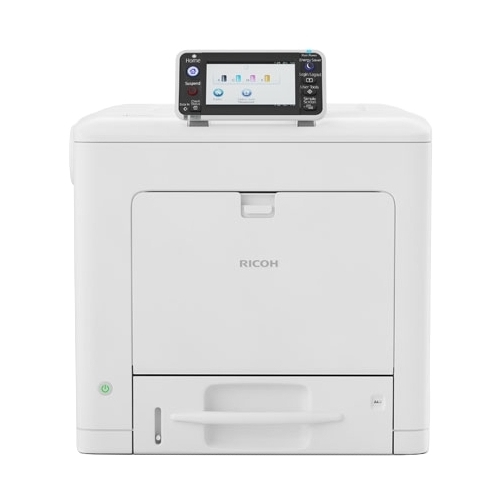
And the final model in this rating group is another Ricoh LED printer, this time already full-color. The model stands out vividly against all previous ones - this printer leaves far behind any of the above described in terms of electronic power, performance and cartridge life.
The printer dimensions are 400x387x515 mm, weight - 33 kg. The level of electricity consumption when printing - 1.2 kW, while waiting - up to 40.2 watts. The control panel is equipped with a fairly large LCD display with a diagonal of 4.3 inches. The peak load for 30 days is estimated at 75 thousand copies. Format - A4.
Detailing the image of this model - up to 1200x1200 dpi for any chromaticity. LEDPrinter prints with an intensity of 30 ppm in any mode. The warm-up time is 18 seconds, the first print is issued after 6 seconds in b / w and after 7.8 seconds in color. Duplex mode is activated on the fly.
The tray capacity parameters are as follows: automatic feeding - up to 2100 sheets, recommended - up to 600; issue - up to 200 sheets; manual feed - up to 100 sheets. The recommended grammar of the paper is 56-220 g / sq. meter.
As mentioned above, this model has one of the brightest advantages - roomy cartridges. Namely, the volume of toner in color cartridges corresponds to conditional 9 thousand prints, in black - 10 thousand.
Powerful electronics - the second important advantage of the model. There is a high-performance processor running at 1.46 GHz and RAM memory in the amount of 2 GB (upper limit). The connection is made via USB or via a local wired network. Embedded PostScript is an additional option, and you should be interested in its availability at the point of sale.
The warranty period of the manufacturer for this model is 3 years.
Virtues
- record performance;
- the most powerful electronics in the group;
- design;
- large liquid crystal color display;
- the highest capacity of cartridges in the selection;
disadvantages
- no wireless connection.
The best LED printers for a large office
And the final review of the selection of devices in the ranking of the best LED-printers according to expert.bigbadmole.com/en/en/ is high-performance machines capable of coping with the working needs of a large office. Our experts included two interesting models from Xerox and one from OKI in the review.
All three models are printed in full color, designed for A3 format, have automatic duplex mode, “understand” PostScript, and are equipped with a web-interface. Connection to all monitored machines exclusively wired - via USB or "twisted pair".
Xerox Phaser 7800DN
Rating: 4.9
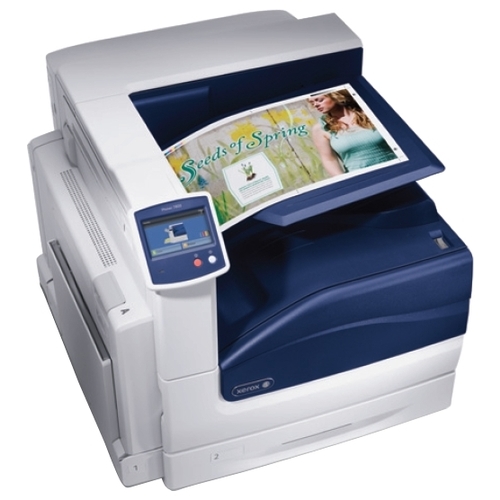
Let's start with the most conspicuous model in the group, which gives a serious head start to the other two with its performance. At the same time, this is the most expensive model, the cost of which seems to many users to be unjustified.
When planning to purchase this printer, you should take into account its physical parameters in advance, so that later there will be no problems with the installation. So, its dimensions are 699x578x641 mm, weight - 81 kg. Initially, the model is designed for floor placement. The level of electricity consumption when printing - 760 W, while waiting - 56 W. Noise at the press does not exceed 52 dB. The control panel is equipped with a 4.3-inch color LCD display. Estimated performance - 225 thousand copies in 30 days.
The maximum image detail of this model is up to 1200x2400dpi for any chromaticity. Color cartridges contain toner volume corresponding to the conditional 6 thousand copies.The resource of the black cartridge is four times more - 24 thousand conditional pages. Suitable paper grammar is 75-350 g / sq. meter.
The performance characteristics are as follows: 45 A4 pages of any color per minute, 22 pages of any A3 color per minute. Warming up time - 61 s. The first print comes out after 9 seconds on any color.
Tray parameters: automatic feeding - up to 3140 sheets, recommended up to 620; issue - up to 500 sheets; manual feed - up to 100 sheets.
The electronic hardware of this LED printer also causes respect. 1.33 GHz central processor, 2 GB of RAM (maximum capacity), 160 GB hard drive.
Virtues
- outstanding performance;
- powerful electronics;
- exceptional toner cartridge capacity;
disadvantages
- inexplicably high price.
OKI C843dn
Rating: 4.8
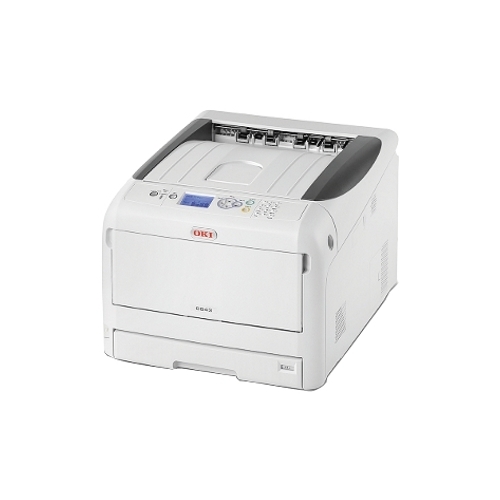
The second position in the group of rating of high-performance LED printers is the OKI desktop high-performance printer. Despite all the distinct advantages of the previous model, this solution is at least no worse, and even better in some places.
The device dimensions are 449x360x552 mm, weight - 40 kg. Adapted for desktop installation. The level of electricity consumption when printing - 1.4 kW, while waiting - up to 100 watts. Noise at the press - no more than 52 dB, in expectation - 32 dB. Estimated peak performance - up to 75 thousand copies in 30 days.
The maximum image detail is up to 1200x1200dpi in any color. The capacity of any toner cartridge corresponds to a conventional 10 thousand copies. The recommended paper density is 64-256 g / sq. meter.
Speed settings: 35 copies of A4 per minute in any color and 20 copies of A3 in any color per minute. It takes 25 seconds to warm up. The first copy on any color comes out after 9.5 seconds.
Tray parameters: automatic feeding - up to 2005 sheets, optimally - up to 400; issue - up to 350 sheets; manual feed - up to 100 sheets.
Factory equipment with RAM memory is 512MB, the permissible upgrade is up to 768MB.
Virtues
- usability;
- cartridge capacity;
- design;
- a combination of cost and performance;
- reliability and durability;
disadvantages
- distinct minuses are not noted.
Xerox VersaLink C7000DN
Rating: 4.8
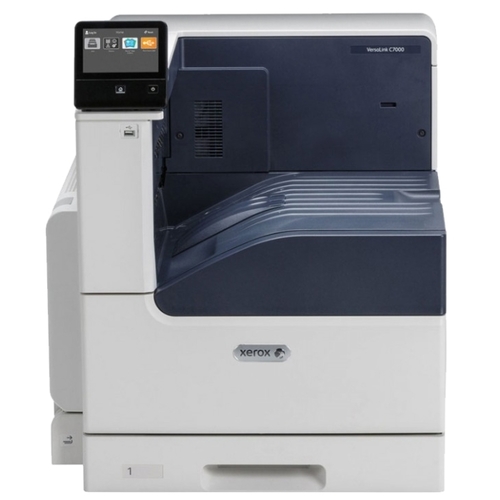
And the final point in our rating is another LED printer manufactured by Xerox Corporation (USA). Our experts placed this decision in the rating, not least because of the useful additional functions, which all the models described above are deprived of.
The size of the printer - 590x637x671 mm, weight - 54.3 kg. Adapted for desktop placement. The control panel is equipped with a color 5-inch LCD display. Estimated performance - up to 153 thousand copies in 30 days.
The limit of image detail for any chromaticity - 1200x2400dpi. The capacity of color cartridges corresponds to the conditional 3.3 thousand copies, black - 5.3 thousand copies. A suitable paper density is 60-256 g / sq. meter.
The speed parameters are as follows: 35 copies of A4 per minute for any color and 19 copies of A3 for any color. The first print is issued after 5.10 seconds in b / w and 7.60 seconds in color.
The characteristics of the tray capacity: automatic feeding - up to 2180 sheets, optimally - up to 620 sheets; issue - up to 500 sheets; manual feed - up to 100 sheets.
All functionality is controlled by a processor operating at 1 GHz. Factory equipment RAM-memory - 2 GB.
A notable feature of this model that clearly distinguishes it from the rest is the presence of a built-in booklet maker.
Virtues
- large display;
- booklet maker;
- print speed;
- overall performance;
- powerful processor;
- bulk memory;
disadvantages
- not noted.
Attention! This rating is subjective, is not advertising and does not serve as a guide to the purchase. Before buying, you should consult with a specialist.



